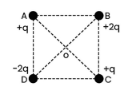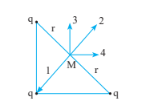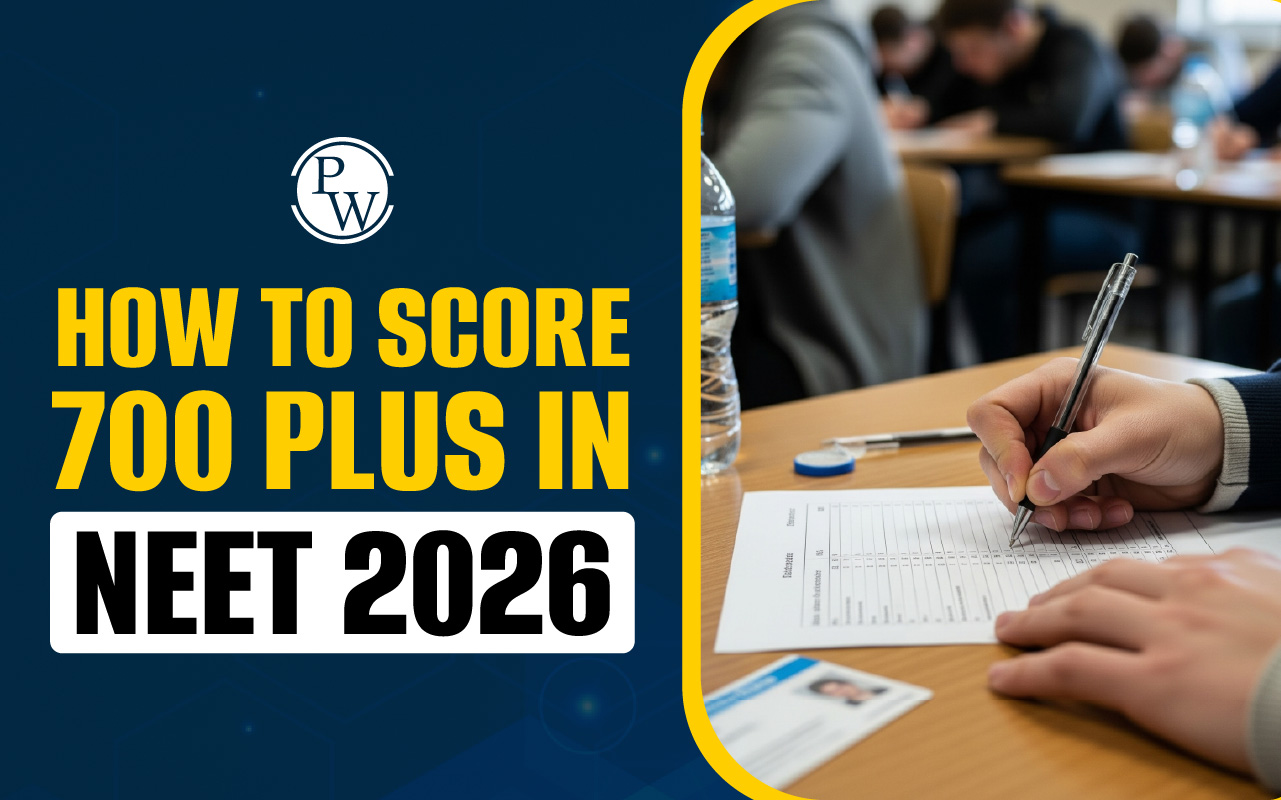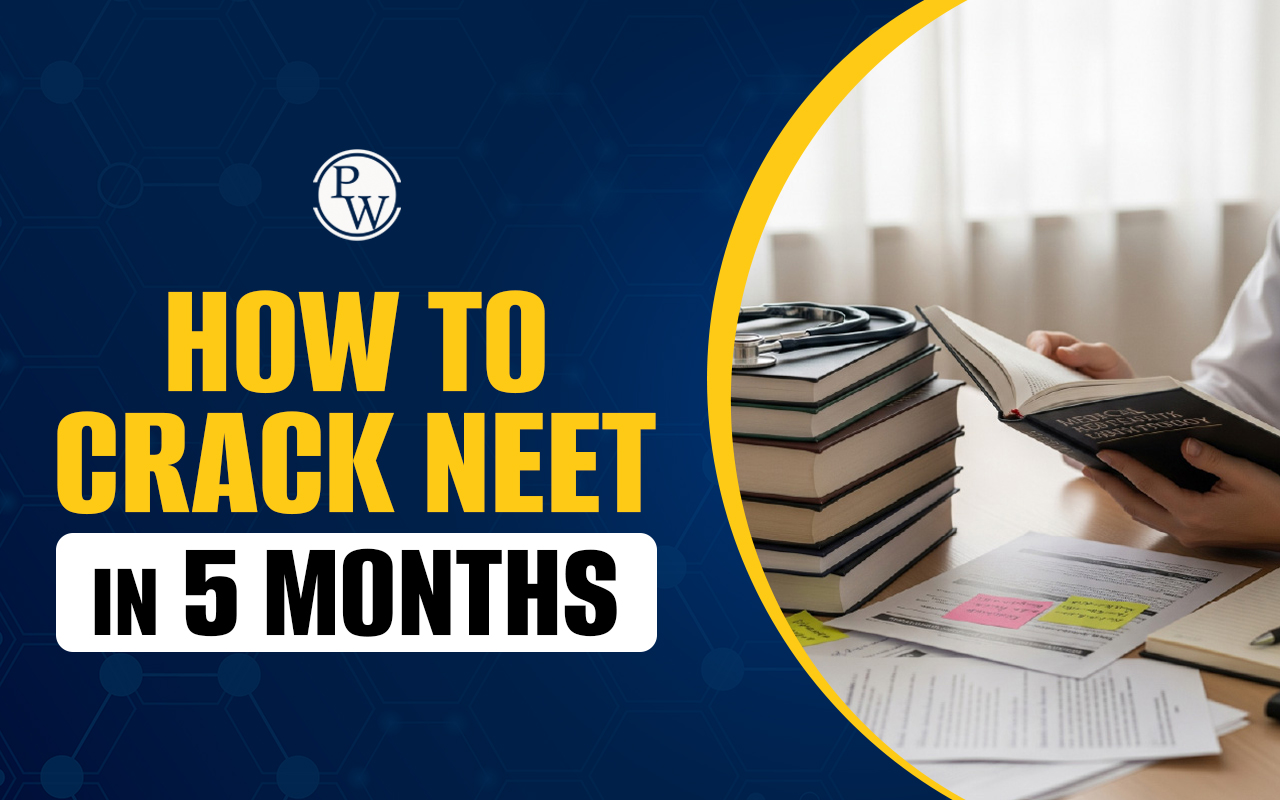
Electric Charges and Field MCQs: Class 12 Physics Chapter 1 Electric Charges and Fields is a scoring chapter in the NEET Physics syllabus . Mastery of the concepts in this chapter is important for achieving high scores on the NEET exam. This section offers an extensive set of NEET MCQs on Electric Charges and Fields to aid in understanding these topics.
Practicing these multiple-choice questions on Electric Charges and Fields will improve your problem-solving skills and help you prepare efficiently for the NEET exam. A strong grasp of this topic is essential for achieving a high score. To support your preparation, our subject experts have curated a detailed set of MCQs tailored for the NEET exam.NEET MCQs on Electric Charges and Field
Understanding electric charges and fields is crucial for performing well in Class 12 Physics and securing a high score on the NEET exam. This chapter is a key part of the NEET Physics syllabus and forms the basis for many exam questions. Students should practice a broad range of Electric Charges and Field MCQs tailored to this topic to prepare effectively. For additional practice, students can solve more Electric Charge and Field Important Questions for NEET provided by PWAlso check:
Electric Charges and Fields MCQs Class 12
For Class 12 students, practicing MCQs on Electric Charges and Fields with solutions is important. These questions help prepare for school exams and establish a strong foundation for the NEET exam. Electric Charges and Field MCQs with solutions provide an approach to solving complex problems, making them easier to understand. These questions cover a wide range of topics within the chapter, such as the properties of electric charges, electric fields, and Gauss's law. Regularly reviewing the Class 12 Physics Chapter 1 MCQs on Electric Charges and Fields is recommended to ensure thorough preparation.Electric Charges and Fields MCQs with Answers
Having access to Electric Charges and Fields MCQs with answers is a valuable asset for NEET preparation. Electric Charges and Field MCQs with answers help to clarify challenging concepts and improve your understanding. Reviewing these MCQs with solutions will strengthen your knowledge and ensure you are well-prepared for similar questions on the exam.| NEET Physics MCQs | |
|---|---|
| Units and Measurements MCQs | Motion in a plane MCQs |
| Mathematics Tools MCQs | Newton’s laws of motion MCQs |
| Motion in a straight line MCQs | Gravitation MCQs |
Q 1. Assertion (A): Charge is invariant.
Reason (R): Charge does not depend on speed or frame of reference.
- Assertion (A) is True, Reason (R) is True; Reason (R) is a correct explanation for Assertion (A).
- Assertion (A) is True, Reason (R) is True; Reason (R)is not a correct explanation for Assertion (A).
- Assertion (A) is True, Reason (R) is False.
- Assertion (A) is False, Reason (R) is True.
Q 2. Assertion (A): The mass of an ion is slightly different from its element form.
Reason (R): Ion is formed when some electrons are removed or added so mass changes.
- Assertion (A) is True, Reason (R) is True; Reason (R) is a correct explanation for Assertion (A).
- Assertion (A) is True, Reason (R) is True; Reason (R) is not a correct explanation for Assertion (A).
- Assertion (A) is True, Reason (R) is False.
- Assertion (A) is False, Reason (R) is True.
Ans. 1
Q 3. Two point charges +3μC and +8μC repel each other with a force of 40 N. If a charge of -5μC is added to each of them, then the force between them will become
- – 10 N
- + 10 N
- + 20 N
- – 20 N
Q 4. Assertion(A): The electrostatic force between two charges is a conservative force.
Reason(R): Electrostatic force between two charges is inversely proportional to the square of distance between the two.
- Assertion (A) is True, Reason (R) is True; Reason (R) is a correct explanation for Assertion (A).
- Assertion (A) is True, Reason (R) is True; Reason (R) is not a correct explanation for Assertion (A).
- Assertion (A) is True, Reason (R) is False.
- Assertion (A) is False, Reason (R) is True.
Q 5. Two point charges A and B, having charges +Q and – Q respectively are placed at a certain distance apart, and force acting between them is F. If 25% charge of A is transferred to B, then the force between the charges becomes (NEET 2019)
- 4F/3
- F
- 9F/16
- 16F/9
Ans. 3
Q 6. Two charged spheres separated at a distance exert a force F on each other. If they are immersed in a liquid of dielectric constant 2, then what is the net force (if all conditions are the same) on each space?
- F/2
- F
- 2F
- 4F
Ans. 1
Q 7. Four charges are arranged at the corners of a square ABCD, as shown in the adjoining figure. The force on the charge kept at the center O is:

- Zero
- Along the diagonal AC
- Along the diagonal BD
- Perpendicular to side AB
Ans. 3
Q 8. Electric charges of 1μC, – 1μC, and 2μC are placed in the air at the corners A, B, and C respectively of an equilateral triangle ABC having a length of each side 10 cm. The resultant force on the charge at C is:
- 0.9 N
- 1.8 N
- 2.7 N
- 3.6 N Ans. 2
Q 9. An infinite number of charges, each of charge 1 μC, are placed on the x-axis with co-ordinates x = 1, 2, 4, 8, ...∞. If a charge of 1C is kept at the origin, then what is the net force acting on 1C charge
- 9000 N
- 12000 N
- 24000 N
- 36000 N
Q 10. Two identical metallic spheres A and B when placed at a certain distance in the air repel each other with a force of F. Another identical uncharged sphere C is first placed in contact with A and then in contact with B and finally placed at the midpoint between spheres A and B. The force experienced by sphere C will be: (NCERT)
- 3F/2
- 3F/4
- F
- 2F Ans. 2
Q 11. A charge is placed at the center of the line joining two equal charges Q. The system of the three charges will be in equilibrium if q is equal to: (NCERT, PMT-1995)
- – Q/2
- + Q/4
- – Q/4
- + Q/2
Ans. 3
Q 12. Two particles A and B having charges 20 μC and –5 μC respectively are held fixed with a separation of 5cm. At what position a third charged particle should be placed so that it does not experience a net electric force?

- At 5 cm from 20μC on the left side of the system
- At 5 cm from – 5μC on the right side
- At 1.25 cm from – 5μC between two charges
- At the midpoint between two charges
Ans. 2
Q 13. Two equal negative charges – q are fixed at the fixed points (0, a) and (0, –a) on the Y–axis. A positive charge Q is released from rest at the point on the X–axis. The charge Q will
- Execute simple harmonic motion about the origin
- Move to the origin and remain at rest
- Move to infinity
- Execute oscillatory but not simple harmonic motion
Ans. 4
Q 14. Three identical point charges, as shown are placed at the vertices of an isosceles right-angled triangle. Which of the numbered vectors coincides in direction with the electric field at the mid-point M of the hypotenuse

- 1
- 2
- 3
- 4
Q 15. Two charges +5μC and +10μC are placed 20 cm apart. The net electric field at the mid-point between the two charges is
- 4.5×106 N/C directed towards +5μC
- 4.5×106 N/C directed towards +10μC
- 13.5×106 N/C directed towards +5μC
- 13.5×106 N/C directed towards +10μC
Ans. 1
Q 16. Two point charges + 8q and – 2q are located at x = 0 and x = L respectively. The location of a point on the x-axis at which the net electric field due to these two point charges are zero is:
- 8L
- 4L
- 2L
- L/4
Q 17. Two small charged spheres A and B have charges 10μC and 40μC respectively and are held at a separation of 90 cm from each other. At what distance from A, is electric field intensity would be zero?
- 22.5 cm
- 30 cm
- 18 cm
- 36 cm
Ans. 2
Q 18. An electron enters an electric field with its velocity in the direction of the electric lines of force. Then:
- The path of the electron will be a circle
- The path of the electron will be a parabola
- The velocity of the electron will decrease
- The velocity of the electron will increase
Q 19. A proton and an electron are placed in a uniform electric field. Which of the following is correct?
- Their accelerations will be equal
- The magnitude of their accelerations will be equal
- The electric forces acting on them will be equal
- The magnitude of the forces will be equal
Q 20. The linear charge density on the semi-circular ring everywhere in the magnitude is the same. The electric field at the center is:
- Along +x axis
- Along-x-axis
- Along +y axis
- Along-y-axis
Q 21. Assertion(A): Electric field lines do not cut at any point.
Reason(R): At any point, there is only one direction of electric field.- Assertion (A) is True, Reason (R) is True; Reason (R) is a correct explanation for Assertion (A).
- Assertion (A) is True, Reason (R) is True; Reason (R) is not a correct explanation for Assertion (A).
- Assertion (A) is True, Reason (R) is False.
- Assertion (A) is False, Reason (R) is True.
Q 22. Statement-I: Electric lines are always straight and continuous.
Statement-II: Crowding of electric field lines at a place represents a stronger electric field at that place.
- Both Statement I and Statement II are correct
- Both Statement I and Statement II are incorrect.
- Statement I is correct and Statement II is incorrect.
- Statement I is incorrect and Statement II is correct.
Q 23. Statement-I: Electric lines of force can never be closed loops, as a line can never start and end on the same charge.
Statement II: The number of electric lines of force originating or terminating on a charge is proportional to the magnitude of the charge.
- Both Statement I and Statement II are correct
- Both Statement I and Statement II are incorrect.
- Statement I is correct and Statement II is incorrect.
- Statement I is incorrect and Statement II is correct.
Q 24. Assertion (A): Electrostatic field lines never form closed loops.
Reason (R): The electrostatic field is a conservative field.
- Assertion (A) is True, Reason (R) is True; Reason (R) is a correct explanation for Assertion (A).
- Assertion (A) is True, Reason (R) is True; Reason (R) is not a correct explanation for Assertion (A).
- Assertion (A) is True, Reason (R) is False.
- Assertion (A) is False, Reason (R) is True.
Q 25. The S.I. unit of electric flux is
- Weber
- Newton per coulomb
- Volt × metre
- Joule per coulomb
Q 26. Assertion (A): Gauss’s law shows diversion when the inverse square law is not obeyed.
Reason (R): Gauss’s law is a consequence of the conservation of charge.
- Assertion (A) is True, Reason (R) is True; Reason (R) is a correct explanation for Assertion (A).
- Assertion (A) is True, Reason (R) is True; Reason (R) is not a correct explanation for Assertion (A).
- Assertion (A) is True, Reason (R) is False.
- Assertion (A) is False, Reason (R) is True.
Q 27. Assertion(A): We cannot find an electric field from Gauss’s law for unsymmetrical charge distribution.
Reason(R): Gauss’s law is not applicable to unsymmetrical charge distribution.
- Assertion (A) is True, Reason (R) is True; Reason (R) is a correct explanation for Assertion (A).
- Assertion (A) is True, Reason (R) is True; Reason (R) is not a correct explanation for Assertion (A).
- Assertion (A) is True, Reason (R) is False.
- Assertion (A) is False, Reason (R) is True.
Q 28. Assertion (A): A charge q is placed in a cube of side b. The flux associated with the cube is independent of side length.
Reason (R): Gauss’s law is independent of the size of the Gaussian surface.
- Assertion (A) is True, Reason (R) is True; Reason (R) is a correct explanation for Assertion (A).
- Assertion (A) is True, Reason (R) is True; Reason (R) is not a correct explanation for Assertion (A).
- Assertion (A) is True, Reason (R) is False.
- Assertion (A) is False, Reason (R) is True.
Q 29. Assertion (A): While applying Gauss’s law, the axis of the Gaussian cylinder should coincide with the line.
Reason (R): In the case of a Gaussian cylinder, the Gaussian surface should be drawn in such a manner that it encloses the charge whose electric field is to be found.
- Assertion (A) is True, Reason (R) is True; Reason (R) is a correct explanation for Assertion (A).
- Assertion (A) is True, Reason (R) is True; Reason (R) is not a correct explanation for Assertion (A).
- Assertion (A) is True, Reason (R) is False.
- Assertion (A) is False, Reason (R) is True.
Q 30. The electric field at a distance 3R/2 from the center of a charged conducting spherical shell of radius R is E. The electric field at a distance R/2 from the center of the sphere is: (AIPMT-2010)
- Zero
- E
- E/2
- E/3
Q 31. A long cylinder contains uniformly distributed charge density ρ. The electric field at a point P inside the cylinder at a distance x from the axis is:
- directly proportional to x
- inversely proportional to x
- constant
- None of above
Ans. 1
Q 32. Consider the electric field due to a non-conducting infinite plane having a uniform charge density.
- The electric field varies with distance from the plane in accordance with the inverse square law.
- The electric field is independent of the distance from the plane.
- The electric field is directly proportional to the square of the distance from the plane.
- The electric field varies inversely with the distance from the plane.
Electric Charges and Field MCQs FAQs
Q. Why are Electric Charges and Fields MCQs important for NEET preparation?
Ans. Electric Charges and Fields MCQs are essential because they cover core concepts from the NEET Physics syllabus. They enable you to apply theoretical knowledge to practical scenarios, which is essential for performing well in the exam.
Q. How do Electric Charges and Fields MCQs help Class 12 students?
Ans. For Class 12 students, practicing MCQs on Electric Charges and Fields reinforces classroom learning and aids in preparation for board exams and NEET. These questions familiarize students with exam formats and enhance problem-solving skills.
Q. What should Class 12 students focus on when practicing Electric Charges and Fields MCQs?
Ans. Students should concentrate on understanding key concepts such as Coulomb's Law, electric field concepts, and Gauss’s Law. Practicing various MCQs helps grasp these concepts thoroughly and prepares them for different question types.
Q. How important is the Electric Charges and Fields chapter in the NEET Physics syllabus?
Ans. The Electric Charges and Fields chapter is a major component of the NEET Physics syllabus with significant weightage. Mastery of this chapter is important for achieving a high score on the exam.
Q. Where can Class 12 students find MCQs with solutions on Electric Charges and Fields?
Ans. MCQs with detailed solutions on Electric Charges and Fields are available above. PW study guides, online resources, and practice tests tailored for Class 12 students preparing for NEET. These resources offer a comprehensive review and practice material.
Talk to a counsellorHave doubts? Our support team will be happy to assist you!

Free Learning Resources
PW Books
Notes (Class 10-12)
PW Study Materials
Notes (Class 6-9)
Ncert Solutions
Govt Exams
Class 6th to 12th Online Courses
Govt Job Exams Courses
UPSC Coaching
Defence Exam Coaching
Gate Exam Coaching
Other Exams
Know about Physics Wallah
Physics Wallah is an Indian edtech platform that provides accessible & comprehensive learning experiences to students from Class 6th to postgraduate level. We also provide extensive NCERT solutions, sample paper, NEET, JEE Mains, BITSAT previous year papers & more such resources to students. Physics Wallah also caters to over 3.5 million registered students and over 78 lakh+ Youtube subscribers with 4.8 rating on its app.
We Stand Out because
We provide students with intensive courses with India’s qualified & experienced faculties & mentors. PW strives to make the learning experience comprehensive and accessible for students of all sections of society. We believe in empowering every single student who couldn't dream of a good career in engineering and medical field earlier.
Our Key Focus Areas
Physics Wallah's main focus is to make the learning experience as economical as possible for all students. With our affordable courses like Lakshya, Udaan and Arjuna and many others, we have been able to provide a platform for lakhs of aspirants. From providing Chemistry, Maths, Physics formula to giving e-books of eminent authors like RD Sharma, RS Aggarwal and Lakhmir Singh, PW focuses on every single student's need for preparation.
What Makes Us Different
Physics Wallah strives to develop a comprehensive pedagogical structure for students, where they get a state-of-the-art learning experience with study material and resources. Apart from catering students preparing for JEE Mains and NEET, PW also provides study material for each state board like Uttar Pradesh, Bihar, and others
Copyright © 2025 Physicswallah Limited All rights reserved.
Get App









